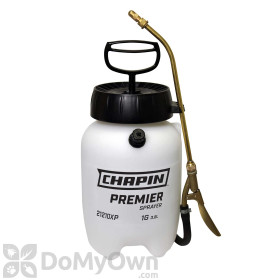Wood-boring beetles can damage wood in and around a home or building. The adult beetles lay their eggs in cracks and holes in the wood and the larvae, or woodworms, eat their way out of the wood over several years. This can result in holes and tunnels in wood structures, outdoor decks, hardwood floors, furniture, and support beams.
While powderpost beetles, old house borer, common furniture, and other wood-boring beetles are beneficial in forests as they eat weak trees, they become a nuisance when they infest and damage homes and buildings.
If you have seen signs of wood-boring beetles, use this guide to DIY your wood-boring beetle treatment. Not sure if you have wood-boring beetles? Read our identification guide here.
Click on one of the methods below to learn more about treating for wood-boring beetles, or continue reading for a step-by-step guide on how to treat wood-boring beetles in all four ways.
Determine if the Infestation is Active
The first step before choosing a treatment is to determine if there is an active infestation in your wood.
Wood powder is a sign of wood-boring beetles.
- If you see white, non-clumpy powder on or near wood, the infestation is most likely active. Woodworms may still be in the wood.
- Yellow clumpy powder is a sign of an old infestation, as are emergence holes in the wood. By the time you see emergence holes, the woodworms have probably already matured into adult beetles and left the wood.
If the woodworms and beetles have left the wood, you can either seal the wood with a sealant or replace the wood (Step 2).
If you have an active infestation, you will need to treat the wood with a borate-based product (Step 3) to kill the larvae and remove the infestation.
Replace Wood

If you have wood that was previously infested with woodworms or wood-boring beetles, the structure of the wood may be compromised due to holes and tunnels from the woodworms. Replace the wood if possible. Replacing wood may also be a more economical option than treating the wood if only one or two pieces of wood were infested.
Treat Wood

Treating wood you suspect is infested with woodworms or wood-boring beetles is the most effective way of killing the pests. Unfinished wood can be treated directly while wood that is sealed or painted will need to have that finish removed before treatment can be effective.
Products needed for Step 3
Choose Your Treatment
Select a product that is borate-based for your wood treatment, such as Bora-Care. Disodium Octaborate Tetrahydrate, or borate, combines oxygen and boron to create a chemical composition that can be used to both treat and prevent pests from eating wood. Look for borate on the product label.
Mix Your Treatment

Bora-Care is a very thick product that will need to be diluted with warm water and mixed thoroughly in a bucket before it can be used in a sprayer.
Read the label of the borate-based product you chose to determine how much water the product will need to be mixed with. Bora-Care should be mixed at a rate of 1 part water to 1 part Bora-Care when treating non-flooring wood for wood-boring beetles, 2 parts water to 1 part Bora-Care when treating hardwood floors, and 5 parts water to 1 part Bora-Care for preventative applications.
Apply On Wood
Using a sprayer, paint brush, or paint roller, apply your product to the unfinished wood. Coat the entire piece of wood, or as much of the wood as you are able to reach.
If the wood will not be visible, such as wood beams that will be covered with drywall, you can add a spray indicator dye like Turf Mark Blue to the borate to indicate where the product has been applied.
Bora-Care will dry clear if applied correctly but will dry with a white finish if over-applied. The white finish can be sanded down with a scrubbing pad if needed.
Bora-Care is your best option for treatment because it will penetrate into the wood. Remember to apply BoraCare to all 4 sides of the wood (any exposed wood) for maximum effectiveness.
Treat Your Home for Beetles
If you see powderpost beetles, borer beetles, common furniture beetles, or any other wood-boring beetles or woodworms in your home, you will need to treat your home with an insecticide labeled for wood-boring beetles.
The treatment in Step 4 will only knockdown beetles in the home and not beetles in the wood. See Step 3 for how to treat wood.
Products needed for Step 4
Select and Mix Your Insecticide

Choose an insecticide labeled for wood-boring beetles or wood-infesting pests, such as Tempo SC Ultra or Bifen IT.
Following the instructions on the label of the insecticide, mix the recommended amount of insecticide with water in a hand pump sprayer, then shake the sprayer to thoroughly mix the insecticide and water together.
Spot Treat Your Home

Spray in the cracks and crevices of the home in the room or rooms where wood-boring beetles or woodworms have been found. Pay attention to the following areas:
- Around door and window frames
- Where baseboards meet the wall
- Where flooring meets the wall or baseboards
- In the corners of rooms
- Beneath furniture and appliances
- Where utilities and pipes enter the room
Stick to spraying in cracks and crevices around the room. These products cannot be broadcast sprayed inside your home. Reapply every 7-10 days as needed.
Once you've removed wood-boring beetles from your home, you can take steps to prevent another infestation. Click on the right arrow below to read our guide on how to prevent wood-boring beetles.








